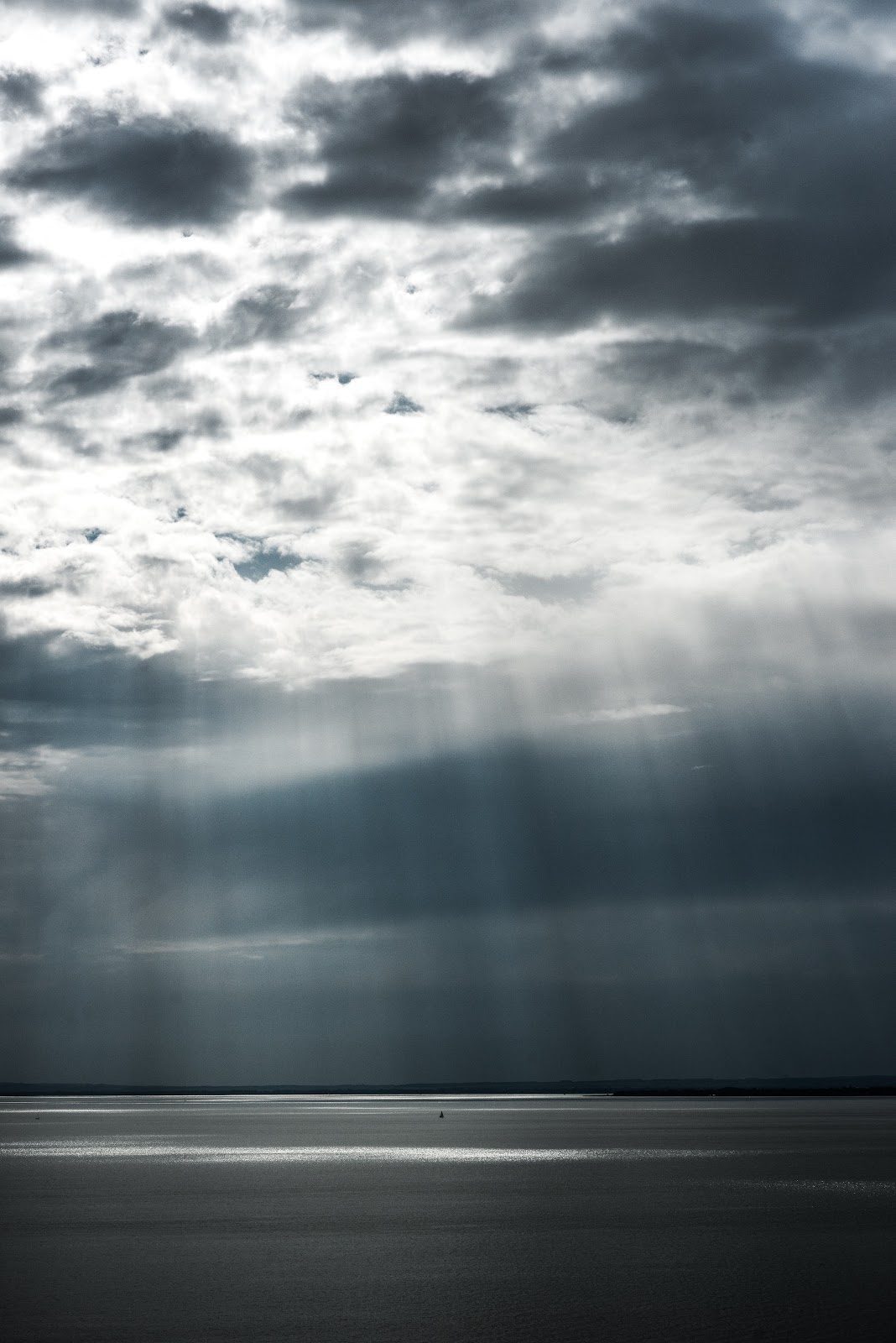As both a woman of faith and one who takes conscious steps to adopt earth-friendly practices in my life, I have recently found myself increasingly fascinated by the extent to which the story of Creation itself embodies ecological principles. Compelled by Creation, I decided to engage in an open-ended reflection on the day-by-day Genesis story.
And God said, “Let there be a vault between the waters to separate water from water.” So God made the vault and separated the water under the vault from the water above it. And it was so. God called the vault “sky.
Genesis 1:6-8
Anybody who’s had the good fortune to visit Big Sky, Montana–or just step outside anywhere on our planet and simply look up, can’t help but be awestruck by the glorious expanse above us. No matter where we are on this Earth, the sky is there for us be it to shelter us, serve as visual inspiration, call us to dream, or allow us to ascend into its magnificent, cushioning clouds as we journey to lands far and wide.
The sky is so much more than something beautiful to behold. Composed primarily of oxygen and nitrogen, the sky begins where the surface of the earth stops and extends upward. This means, technically speaking, the sky includes the air we breathe each and every second of every day, the same air that is synonymous with life itself. Indeed, Isaiah 42:5 reminds us that God, in creating the skies, literally “stretched them out,” graciously giving mankind not only the air that sustains us in physiological terms, but also constitutes our soul, as a direct translation from the Hebrew tells us.
It bears mentioning translations of “sky” in Genesis do vary, some making reference to God creating Heaven on Day Two of Creation. For all of us, when we think of Heaven, the compass automatically points up, but what exactly is Heaven?
God’s Heavenly Creation
When asked to describe this ethereal dwelling, most of us would mention a subset of common elements including, but not limited to, pearly gates, angels, clouds, and beaming light. Throughout the ages, painters have ceaselessly lent their talents to pictorially depict what Heaven must look like—or at least, how it appears in their mind’s eye. After all, when it comes to visualizing Heaven, we really only have our imagination to guide us. When all is said and done, no humans can travel and return to earth from Heaven to recount its marvels.
Even if we don’t exactly know what Heaven looks like, we do consider it to be the kingdom of God, a place where we aspire to join Him, should we be deemed worthy of His grace. When we contemplate Heaven, situated “up there” in the sky, we are reminded of Psalm 57:10, which speaks of God’s unfaltering love for us in dimensions so great, that it extends to the clouds and the Heavens.
Above all, when we gaze up at the Heavens, we are reminded they are immense and we who inhabit the Earth are, by comparison, small. In creating the sky, God displayed the breadth of His handiwork, offering us a space to contemplate His wonders as well as to give thanks for our very lifesource, the air that we breathe, and, by extension, His divine breath, lovingly exhaled into us, so that we may live.
Our Skies, Our Air, Our Lives
Contemplating the great skies above and reflecting on the current state of our Earth brings about a sobering realization: we must cherish this worldly Creation God has generously bestowed on us to continue living happily. Whether we view purposeful acts of creation care as a path towards the afterlife or a road to improving our living conditions for generations to come, we must preserve the gift He has given us.
This is a mission that warrants a collective response as our current communities and future generations face a worsening environment if no mitigative steps are taken to improve our surroundings.
According to the World Health Organization, nine out of ten people worldwide breathe air with high levels of pollutants, and in many places pollution poses an immediate threat to children and expectant mothers.
Yet, like God’s process of Creation, this undoing is a work in progress. We can work collectively, by asking our leaders to hold manufacturers accountable for the toxins they release into the air, as well as creating strategies for cleaner production processes. On an individual level, we can choose to walk or use public transport whenever possible, which not only benefits the environment and helps to maintain our health. It also provides us a unique opportunity to explore paths untaken, smile at a stranger, and feel ourselves part of this stunning Earth, under the vast expanse of God’s sky.
Here are some practical ways to make sure you’re breathing clean air from the American Lung Association.





 Copyright
2024
Root and Vine
Copyright
2024
Root and Vine